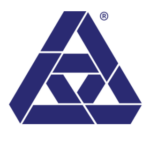Traditional product development cycles used to take ages, but not anymore. Insurers aiming to stay competitive need the ability to act fast, test quickly, and scale confidently.
That might sound aspirational — and sure, it does take real change. But it’s absolutely achievable with the right technology foundation.
A robust, modern tech stack with EIS OneSuite™ as your foundation is what can get you there.
The recent successes of a leading North American mutual life insurer and EIS customer showcase the possibilities our platform can drive, even when entering a brand-new line of business . In this case, a century-old life insurer wanted to enter the hyper-competitive group workplace benefits (GWB) space.
This carrier’s ability to develop and launch eight new products in two years shows you don’t need to be a tech startup to move like one. In this post, we’ll show how EIS OneSuite helped them unlock new possibilities quickly, and at scale.
A Bold Bet on Group Benefits
The 150+-year-old life insurer we’re discussing didn’t need to pursue a new business line. They had a consistent top-10 market share in life coverage, strong brand recognition, and a satisfied customer base. They could’ve coasted along and rested on their laurels.
Instead, they saw an opening in GWB and began planning to take it.
The Goal: From Legacy Life Insurer to Modern Group Benefits
Company leadership had a vision of becoming a GWB market leader within 10 years through highly differentiated, digital-oriented insurance products. They tasked a small, dedicated team with making that happen.
The Challenges They Faced
Few segments of the insurance market demonstrate the limitations of legacy and modern legacy core systems like life insurance. The decades-old technology tends to be very long in the tooth, and sometimes several decades old, like the policies it supports.
That leaves little room for making innovative life products, to say nothing of launching products in a brand new line of business. Also, these legacy cores don’t easily integrate with enrollment platforms GWB needs, or support intuitive user experiences.
This insurer’s one early advantage was in their mission in how they would approach their new group benefits project. Instead of running it directly connected to the main business, they launched it as a greenfield project. It ran separate from the carrier’s core life insurance business, and thus didn’t face any limitations their tech stack might’ve had.
Granted, this demanded a brand-new tech stack — specifically, a core platform that’d support fast-paced, innovative development.
Agility on Demand With EIS OneSuite™
This insurer chose EIS as their technology partner to support their move into group benefits. OneSuite ticked all the boxes for their needs in a way other vendors didn’t:
- EIS OneSuite™ supports an agile product development environment. This would simultaneously allow for flexible, scalable development and enabled a test-and-learn approach for strong quality control.
- Thanks to the platform’s cutting-edge tooling, the carrier could create new policy types ASAP. Beyond speed, products would have intuitive user interfaces (tailored to key GWB user groups), intelligent workflows, dynamically flexible business rules, and more.
- With access to over 9,000 open APIs, EIS OneSuite facilitates friction-free integration with critical internal and external systems.
These and other OneSuite advantages helped the insurer create products and enter their new market quickly.
A Rapid Launch, and a Real ROI
Lightning-quick speed to market let the carrier establish their GWB presence with a bang. The first three policy offerings (dental, vision, and life) were up and running 11 months after the insurer and EIS teamed up, with employers, brokers, and employees able to manage their needs via the admin platform’s customer-facing portals.
Six months later, they added accident, hospital indemnity, and critical illness insurance. Disability coverage rounded out the product group by the two year mark.
All told, this brought in a $10 million ROI via new premiums written. To boot, the insurer simplified processes that many GWB insurers — and their (frustrated) customers — find problematic… problems the carrier would’ve had if they ran on a legacy core.
For example, they streamlined and digitalized enrollment to minimize issues among brokers and employers. Also, the event-driven architecture of EIS supports a case-driven claims process where injured or ailing employees can file just once for all relevant coverages.
Along with rich personalization through tailored portals, these strengths kept the insurer from traps that have burdened other GWB carriers.
Chase Your Open Opportunity Without Restrictive Tech
For a deeper dive into this insurer’s background, challenges, and success, read our case study here.
If you’ve got the ambition, EIS OneSuite™ has the digital-first, cloud-native tech foundation you need to achieve your goals.





